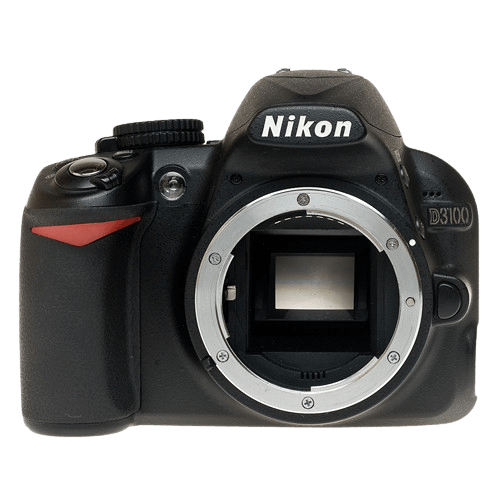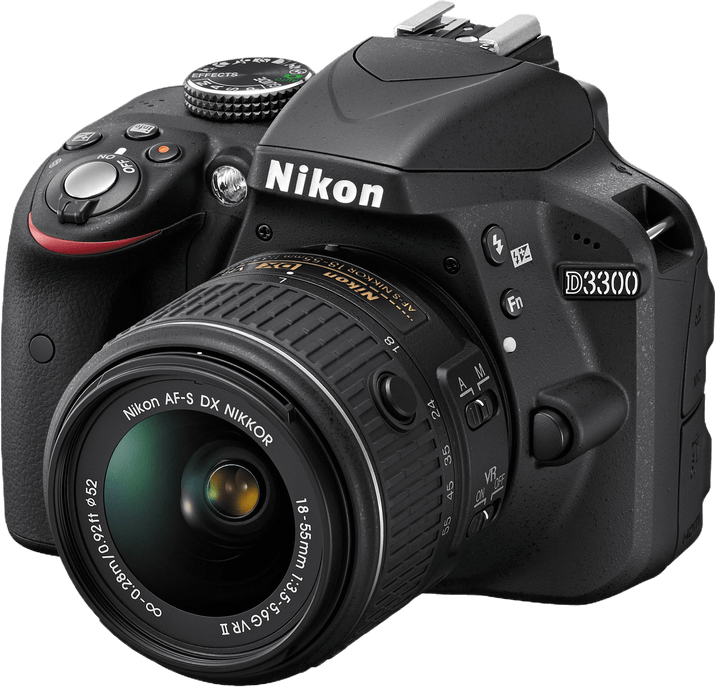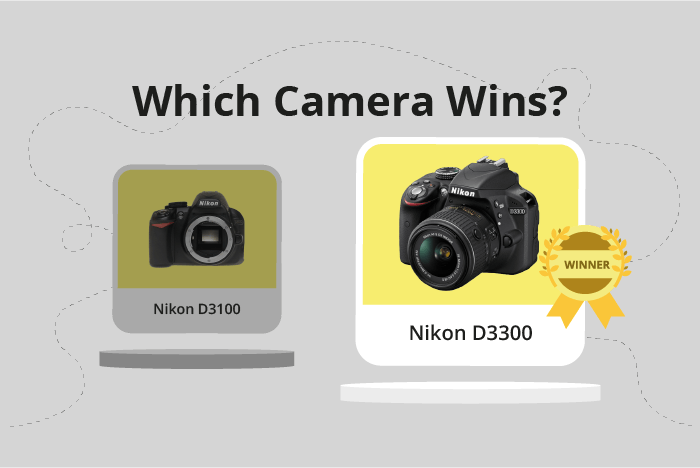Nikon D3100 vs D3300 Comparison
Nikon D3100

Nikon D3300

The Nikon D3300 outperforms the Nikon D3100 with a score of 55/100 compared to the D3100’s 41/100. Both cameras are DSLRs, announced in 2014 and 2010 respectively, with similar dimensions (D3300: 124 x 98 x 76mm; D3100: 124 x 96 x 75mm). The D3300 has a lower launch price ($650) than the D3100 ($699), and it is lighter (430g) than its counterpart (505g).
The Nikon D3300’s higher score reflects its improved performance and features. However, the Nikon D3100 still offers some advantages, such as a slightly smaller size, which could be a deciding factor for some users.
When comparing these two cameras, the Nikon D3300 stands out as the better option due to its higher score, lower price, and lighter weight. Nonetheless, the Nikon D3100 remains a viable choice for those who prioritize compactness.
Nikon D3100 vs D3300 Overview and Optics
The Nikon D3300 outperforms the Nikon D3100 in optics, with a score of 64/100 compared to the D3100’s 41/100. Both cameras share some common specifications, such as the APS-C sensor size, Nikon F DX lens mount, and the lack of image stabilization. However, the D3300 surpasses the D3100 in several aspects, making it the superior choice for photographers.
One key advantage of the Nikon D3300 is its higher megapixel count, boasting 24.2 megapixels compared to the D3100’s 14.8 megapixels. This allows the D3300 to capture more detailed and sharper images. Additionally, the D3300 has a faster shooting speed of 5 frames per second, while the D3100 only manages 3 frames per second. This enables the D3300 to capture fast-moving subjects more effectively.
The Nikon D3300 also benefits from an upgraded processor, the Expeed 4, compared to the D3100’s Expeed 2 processor. This results in faster performance and better image processing. The D3300’s sensor also scores higher on the DXOMARK test, with a score of 82 compared to the D3100’s 67, which highlights the superior image quality offered by the D3300.
Despite these advantages, the Nikon D3100 does not have any notable areas where it outperforms the D3300. The only benefit of choosing the D3100 would be its lower price, but this comes at the cost of lower performance and image quality.
Considering these factors, it is evident that the Nikon D3300 offers better optics and overall performance than the Nikon D3100. Photographers looking to capture high-quality images should opt for the D3300, while those on a tight budget may still consider the D3100, but with the understanding that they will be sacrificing some performance and image quality.
Nikon D3100 vs D3300 Video Performance
When comparing the Nikon D3100 and the Nikon D3300 in terms of video capabilities, it is important to note that the Nikon D3100 does not have any video functionality. This means that if video recording is a priority for you, the Nikon D3100 would not be a suitable choice.
On the other hand, the Nikon D3300 has a video score of 56 out of 100. This camera offers Full HD video recording with a maximum resolution of 1920 x 1080. Additionally, it can record at a maximum frame rate of 60fps, providing smooth motion capture for your videos. However, the Nikon D3300 does not have built-in time-lapse functionality.
Taking these factors into consideration, the Nikon D3300 clearly offers video recording capabilities that the Nikon D3100 lacks. If video recording is an important feature for you, the Nikon D3300 would be the better choice between the two cameras.
Nikon D3100 vs D3300 Features and Benefits
The Nikon D3300 outperforms the Nikon D3100 in features, with a score of 41 out of 100 compared to the D3100’s score of 36. Both cameras share several specifications, such as a 3-inch screen size, lack of touchscreen, flip screen, GPS, WiFi, and Bluetooth capabilities.
The D3300’s advantage lies in its higher screen resolution of 921,000 dots, compared to the D3100’s 230,000 dots. This allows the D3300 to deliver a clearer and sharper image on the screen, making it easier for photographers to review their shots and make adjustments as necessary. This improvement in screen resolution is a significant factor contributing to the D3300’s higher feature score.
On the other hand, the D3100 does not have any specific features that make it better than the D3300. Both cameras lack many modern features found in other models, such as a touchscreen, flip screen, GPS, WiFi, and Bluetooth connectivity. Despite this, the D3100 remains a reliable option for beginner photographers or those on a tight budget.
Taking these factors into consideration, it is evident that the Nikon D3300 is a better choice for those seeking a camera with superior features. The improved screen resolution provides a noticeable advantage, making it easier for photographers to review and adjust their shots. While the D3100 may still be a viable option for beginners or budget-conscious consumers, the D3300’s higher feature score and screen resolution make it the clear winner in this comparison.
Nikon D3100 vs D3300 Storage and Battery
The Nikon D3100 outperforms the Nikon D3300 in storage and battery with a score of 53/100 compared to the D3300’s 32/100. Both cameras share similarities in storage, as they each have a single memory card slot and accept SD, SDHC, and SDXC cards. However, differences arise when considering battery life and type.
The D3100 has a significantly longer battery life, lasting for 4500 shots, while the D3300 only manages 700 shots. Both cameras use different battery types, with the D3100 utilizing the EN-EL14 and the D3300 using the EN-EL14a. Neither camera supports USB charging.
In this comparison, the D3100 clearly excels in battery life, providing more than six times the shots compared to the D3300. However, the D3300 does not have any advantages in storage and battery over the D3100. Thus, for photographers prioritizing longer battery life and efficient storage, the Nikon D3100 is the better choice.
Nikon D3100 vs D3300 – Our Verdict
Are you still undecided about which camera is right for you? Have a look at these popular comparisons that feature the Nikon D3100 or the Nikon D3300:

